| Umělec 2011/2 >> Contemporary Art Is Not | Просмотр всех номеров | ||||||||||||
|
|||||||||||||
Contemporary Art Is NotUmělec 2011/201.02.2011 Palo Fabuš | contemporartism | en cs de |
|||||||||||||
|
There are no simple questions. Not only do all questions already contain the seed of their answer, but neither are there any questions that do not have other questions hidden inside them. Recently, a group of theorists, artists, curators, and art historians asked a seemingly simple question: What is contemporary art? Their essays (in the etymological meaning of the word—“attempts”—as well) on this subject were recently published by the e-flux journal with the subtitle “What is Contemporary Art?”
As we know from Marcel Broodthaers, ever since Duchamp art has been defined primarily by the artist. Every work of art represents a contribution to a discussion, a confirmation or refutation of contemporary ideas. It is the task of curators and gallery owners to, in accordance with their tastes, give artists the chance to “speak.” And it is the task of critics to symbolically re-create this art through their interpretation thereof. However, art is among other things also the object of the viewer’s interest and a catalyst for the subjective formation of our relationship to the world. For this reason, it is no less important to talk, hear, read, and write about art despite the fact that talking about art will never be more than a shadow of the inexpressible, as the oft-quoted Giorgio Agamben states in the aforementioned publication. What is contemporary? Even before we utter our question, several sub-questions emerge: What is contemporary? What exactly is the present day, the contemporary era? Is it the last year, or the last decade? Is it the time that has passed since the last great -ism, movement, or school—i.e., a singularity that has become an icon that always redefines the values and their representations in the artistic era? Is it the era defined by the excessive use of Hirst’s shark by the popular press to define contemporary art using an icon easily recognizable even to the uninitiated? Or to put it more pointedly: Is it that era to which Hirst no longer belongs? Duchamp still feels exceedingly contemporary when compared to Net Art, which already strikes the viewer as outdated. The definition of what is contemporary depends on the questions we ask, agree the members of the Raqs Media Collective, the authors of one of the essays. If we take a more generalized starting point, it becomes extremely difficult to defend particular choices without getting caught up in particulars. Something that can be determined quite reliably, however, is uncertainty and diffusion, which extend far beyond the world of art. Of course, posing questions about contemporary art need not be limited to asking about art, and according to Dieter Roelstraete this is the case here. Roelstraete argues that “What is contemporary art?” and “What is art?” are two different questions. The first emphasizes contemporariness, i.e., it asks what is contemporary about today’s art and what is not, while emphatically avoiding any questions as to the “artness” of today’s art. Contemporary art, he claims, is just one part of a broad field of culture, which is not the case for art as such. Contemporary art as the embodiment of (mere) culture, Roelstraete writes, is necessarily the subject of critical rejections. The difficulty in defining the boundaries of the contemporary perhaps arises from the transformation of the nature of the present day. Boris Groys believes that, unlike the modernist era when the present was a narrow gateway between the past and the future, today it is a place marked by the constant rewriting of history and visions of the future. We have found ourselves in a constantly reproducing contemporariness that no longer flows into the future. No less interesting is his observation that the phenomenon of wasted time represents the loss of an eternal historical perspective. We experience the present day as constant procrastination and boredom, which according to Heidegger’s ontology is a necessary precondition for perceiving the presence of the present. Why is this question so important to us? The boredom that Groys mentions is key to understanding the nature of today’s contemporariness. By definition, in a society of spectacle and the no less spectacular rejection of spectacle, boredom is ostracized. To be accused of being boring is a serious charge. Of course, boredom has always been something that we “drive away”—in fact, we would be justified in thinking that, as a historical and cultural concept, boredom first appears (or takes on special meaning) after the emergence of the industrial sector designed to prevent boredom, the entertainment industry. But in a culture in which, in the end effect, singularities are effective and time and space that eliminate and disintegrate communications are immediately gobbled up and “banalized,” driving away boredom is the order of the day, and in its urgency would appear to compete for the lowest levels of Maslow’s pyramid. It’s like chasing your own tail and the more playfully we chase it away, the more attention it demands later. In this linear cross-section of today, this obsession with contemporariness and contemporaneity is nothing more than running in place faster and faster. As for the world of art, Groys (like Wittgenstein) wonders whether this obsession is merely a déformation professionnelle. But once again: the world of art is certainly not an exception. Has not historicity become so ingrained in our way of thinking that it no longer is a mere feature of certain modi operandi, but has become an integral part of our modus vivendi? Can we still discover without engaging in questionable divisions into old and new? Friedrich Nietzsche, the philosopher with a hammer, destroyed the old assumption that ethics can be derived only from some kind of pre-ethical metaphysical truth when he accused the historical proponents of this view (from Socrates to his contemporaries) of promoting a metaphysics that was nothing more than their own moral image of the world wearing a mask of ineluctable, established fact. Later, Emmanuel Lévinas follows up on this fundamental and historical questioning of the ideas of the first philosophy,which metaphysics had been considered to be since the time of Aristotle by calling ethics the first philosophy; together with British philosopher and author Iris Murdoch, even the most neutral claims are based on a hidden “vision of the world.” The aspect of novelty or originality as an emergent quality of the relationship to the world found not only in art but also in science and philosophy has recently been called into doubt in a variety of ways. For instance, when Isabelle Stengers places relevance before novelty, which is to be applied in assessments—that is even in assessments that refuse to be explicit (e.g. in the sole fact of mentioning something rests a value-based impulse to do so). The question of novelty as a historical category in an over-historicized society thus hangs over everything that can be included into the field of culture in terms of its value. The rejection of novelty as an ontological perspective conceals a no less interesting speculative point of view in which the persistence of novelty is rejected as an affective inertia of a cultural simulacrum. Today’s society could thus be understood as a constantly actualized homeostasis. In other words, we can think of both a developing society as well as a lasting society. Today, the imperative of contemporaneity can be found in many places: in the tension between the desire to be “well informed” and the insatiability of this desire, between the desire to understand the world and the speed with which it disappears just when we thought we understand it. Similar to one of the essays in this anthology, one respondent to a survey held by October magazine editor Hal Foster stated that dissertations on contemporary artists who had once been completely rejected today far exceed dissertations on historical art. Historians, who for most of the existence of their discipline derided the study of recent history as mere journalism, have identified this same trend. Why has it been poorly formulated? The question as such is also asked by the art world discourse itself. This means that it starts from and hopes to return to it as a way of preventing real novelty. Because the fine arts usually understand the history of the 20th century as a more or less chronological sequence of -isms, schools, and movements, it expects another stroke of the metronome at the current end of time. Because, however, no new round of generational conflict has appeared, the acts of artistic patricide performed routinely (almost trance-like) in the world of art strike us almost the same as that missing beat. “No matter what you do, it always appears to be familiar,” says Carol Yinghua Lu, whose observations on contemporary Chinese art hint at the fact that the basic contours of the art world today are unconditionally universal. The obsession with young and emerging artists is no local exception anywhere. The question arises as to how long culture can manage to function like an overcharged Search and Nominate Machine, a real machine for linking cause to effect. But let’s be honest: Is any artist today still capable of making art without his consciousness being intoxicated by a discourse that is obsessed with historicization, who even while making his very first artworks doesn’t already have visions of future publications showing examples of his first artworks? Can he (or better said, is he still allowed to) truly avoid having any idea of what he is doing? Can an artist today still not be a tentacle of discourse? One may be justified in thinking that any historical analysis of this situation is complicated by a fatal surplus of information. This possibility is promoted by Jörg Heiser, who argues that -isms such as pop art, minimalism, or conceptualism arose under conditions of a productive shortage of information, which would only have robbed the antagonism of styles of its energy by, for instance, smoothing the edges or calling attention to inner contradictions. “It has become impossible to make the same ‘productive’ mistakes again.” (p. 93) The proverbial final straw was the idea that culture is a field (one of many in daily life) requiring coverage in the journalistic meaning of the word. This idea—most tangibly embodied by the internet—is an expression of the strength of attraction that blurs the boundaries between the contemporaneity of novelties and their own novelty, just as we know it from the contemporary inability to distinguish between real and false diversity (see, for instance, world music). One indicator tells us that the more doggedly we pursue the question of contemporary art (even without uttering it explicitly), the less likely we are to receive an answer. In what is probably the anthology’s best essay (reprinted elsewhere in this issue), Dieter Roelstraete refers back to Alain Badiou and his idea that the contemporary world is doubly hostile to truth procedures—i.e., a new name reflecting the dominant practice comes to cover and repress the old name. For instance, the act is first covered by a name (“love”), which is later covered by another word (“sex”). The same process can be found with science-technology, politics-management, and art-culture. As I have already intimated, the movement of discourse and its need for self-preservation causes this. According to Roelstraete, art is focused on finding its relationship to the cultural system. With this one-dimensional affirmative relationship to the cultural complex—which is pure affirmation—art has become an affirmative force in and of itself, as underscored by its emphasis on contemporaneity. Not only is contemporary art the art that is being created today (i.e., today’s art), but in its efforts at being a condensation of the present day, of infiltrating and shaping it (which it accomplishes by practically making it taboo to limit which forms, practices, or tropes can be given the status of art—i.e., it is convinced that “anything can be art”), it takes on entirely different qualities. In other words: Nobody argues anymore that something is not art. The real critical question thus is not what is contemporary art, but rather what isn’t. Hegel’s argument that art is a thing of the past (reiterated in the past century by Arthur Dante), along with the idea of art as an eternal hope, lead Roelstraete to argue that art is a thing of the past and the future, and that today’s art only calls itself art although it what it actually wants to be is culture. Roelstraete understands contemporary art as an interregnum between the art that disappeared in the past and its return in the future. Contemporary art is not. In one of his older essays, “After the Historiographic Turn: Current Findings” (e-flux #6 May, 2009), Roelstraete meditates upon the possibility that the seeming incomprehensibility of art today is, on the one hand, a desirable quality that essentially resists the intellectual comfort of being named by an insatiable institutional machine. On the other hand, however, this may merely be an excuse for lazy thinking, mental paralysis, and a lack of courage—which bears a striking resemblance to Adorno’s 70-year-old analysis of the cultural monopoly: “It is a delicate question whether the liquidation of aesthetic intrication and development represents the liquidation of every last trace of resistance or rather the medium of its secret omnipresence”. (Theodor W. Adorno, The Schema of Mass Culture). There lies a very thin barrier between the tendency to see art everywhere and seeing it nowhere—a barrier that often characterizes shifts in paradigm. If we today need the courage for something, then it is also the determination to admit the unfathomable illusion of a normal culture (to paraphrase Thomas Kuhn’s idea of ‘normal science’) that unconsciously assumes that art has always been, is, and will be and that—year in and year out, decade for decade, and generation after generation—somebody will make art that matters. It means the courage to admit that art is not a historical constant, which (as Roelstraete intimates) it needn’t be here at all, despite systemic and systematic claims of the opposite. e-flux journal. What is contemporary art? Sternberg Press, 2010. 216 pages. Translated from Czech by Stephan von Pohl.
01.02.2011
Рекомендуемые статьи
|
|||||||||||||
|
04.02.2020 10:17
Letošní 50. ročník Art Basel přilákal celkem 93 000 návštěvníků a sběratelů z 80 zemí světa. 290 prémiových galerií představilo umělecká díla od počátku 20. století až po současnost. Hlavní sektor přehlídky, tradičně v prvním patře výstavního prostoru, představil 232 předních galerií z celého světa nabízející umění nejvyšší kvality. Veletrh ukázal vzestupný trend prodeje prostřednictvím galerií jak soukromým sbírkám, tak i institucím. Kromě hlavního veletrhu stály za návštěvu i ty přidružené: Volta, Liste a Photo Basel, k tomu doprovodné programy a výstavy v místních institucích, které kvalitou daleko přesahují hranice města tj. Kunsthalle Basel, Kunstmuseum, Tinguely muzeum nebo Fondation Beyeler.
|







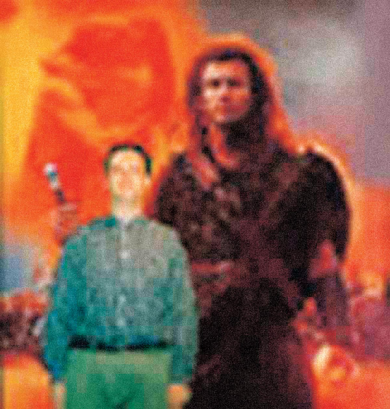













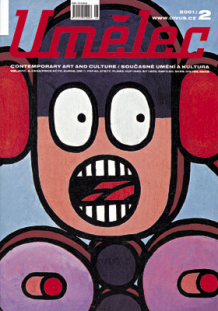




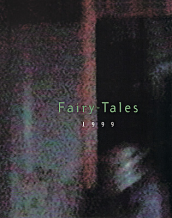
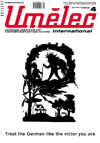
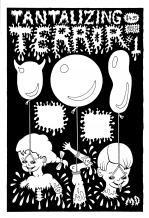
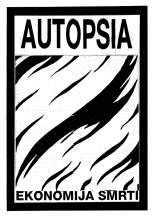


 We Are Rising National Gallery For You! Go to Kyjov by Krásná Lípa no.37.
We Are Rising National Gallery For You! Go to Kyjov by Krásná Lípa no.37.
Комментарии
Статья не была прокомментированаДобавить новый комментарий